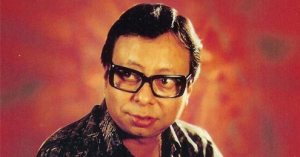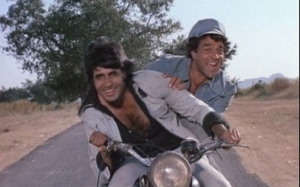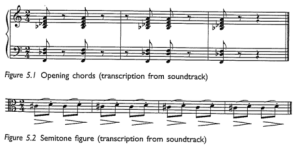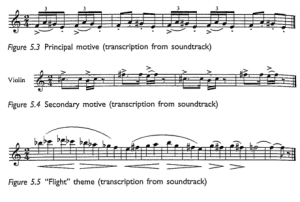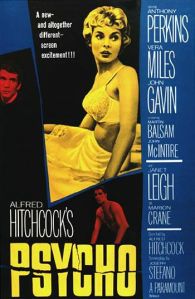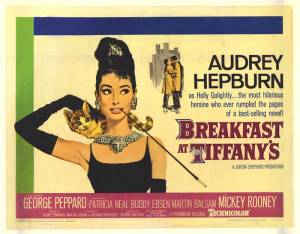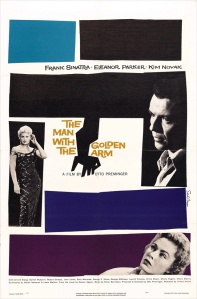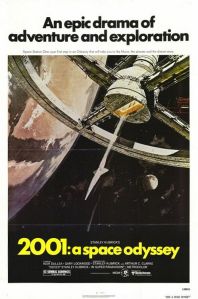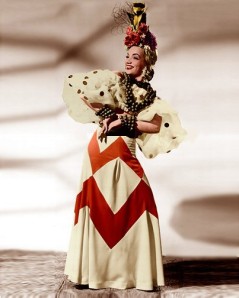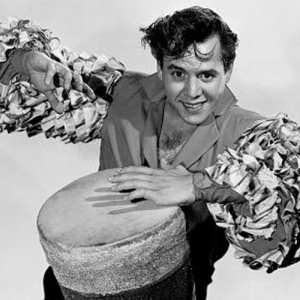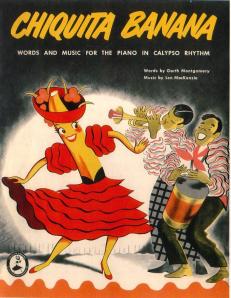Bollywood film composers normally garner most of their praise for the songs on the soundtrack. R.D. Burman is no exception to this. As I stated in a previous entry, Sholay’s soundtrack is a major reason why the film was such a big hit in the theaters. One of the less appreciated aspects of this Hindi cinema composer is his approach to blending the ambient soundtrack to scoring action sequences. For example, during the train scene at the beginning of the film, Burman uses the sound of the orchestra to mimic the sounds of the train whistle. It might be hard to miss except that the the brass blasts repeat at predictable intervals and their pitch changes as the scene progresses. As the action heats up, the percussion beats mimic the chugging sounds of the train. One might miss that Burman is borrowing the train sounds in this score were it not for their regularity and slight deviations in execution more typical of musical performance. As you listen to this scene, pay attention to how the sounds of the orchestral blasts and percussion are used to blend the action and the affect as Jai and Veeru do the honorable thing for Thakur, their captor.
Through his collaboration with his musicians, Burman is able to employ a similar effect in the chase scenes towards the end of the film (around 02:42:00); however, in this case it depends upon his use of traditional North Indian instruments thereby changing his role and the music’s function. When Basanti is attempting to escape Gabbar Singh’s men, the score introduces some ferocious tabla playing. The rapid beats on the right hand create a rough mickey-mousing effect with Basanti’s footsteps. As the scene progresses, the tabla blends with the sounds of the horse-hooves hitting the ground in a chase. It is a knowing display of compositional and improvisatory dexterity that mixes the affect and action of the scene. As a viewer, I can interpret the tabla beats and enharmonics as mimicking Basanti’s heart-racing panic as she tries to escape, or I can follow them to their physical logic in a manner similar to what the class has observed in other action sequences–an attempt to make the audience’s heart race through elevating tension. As my friend and colleague Allen Roda explained to me, tabla players are famous for being able to make their instruments mimic a wide variety of sounds: birds, trains, horses and more. It isn’t a surprise that the musician came so close to the sounds of the horse hooves. Further, the transition from first five seconds to the cart elevates the tension in the scene, demonstrating that the tabla player is accompanying the action in the scene through an improvisation more than playing a composition – he is clearly following and enhancing the action on-screen through his playing. The low pitched “ge” gives the music a cyclical sense of periodicity, or, in other words, a sense of stable time.
The other level at work here is how the music highlights the genre borrowing that is fundamental to the film. Through its narrative conventions, Sholay is a clear blending of Spaghetti Western and Hindi film;* it features gun fights, train robberies and a vigilante sense of justice. Yet, there are many instances when the film emphasizes its time-frame in the 1970s; Jai and Veeru enjoy their ride on a motorbike, and at one point, Jai picks up an automatic weapon to gain the advantage in a gun fight. By bringing the sounds of Hindustani music to the foreground in the chase scene, Burman further emphasizes the ways that the film blends 1970s India with narratives of honor and justice more fitting for the Wild West.
R.D. Burman’s musical approach is fundamental to making this blending work in a filmic context. As a composer, he was most famous for adapting “Western” (i.e. based in European classical and popular music, not the Western genre film style) scoring techniques to Hindi cinema through rhythmic complexity. As Ethnomusicologist Gregory D. Booth has argued, Burman’s adoption of Hollywood scoring techniques and linear notions of rhythm and time (in contrast to the cyclical nature of Hindustani’s tala) made his films more viable and current with a younger and more globally oriented generation. In both scenes above, Burman emphasizes the narrative imperative of the music and rhythmic regularity to ground the audience while also allowing them to feel tension and excitement. It makes these scenes especially satisfying when compared to scoring conventions from other parts of the world.
—
* In this week’s reading, Ganti points out that the film blends other narrative conventions – love, action, comedy, drama, song – making it a masala.
